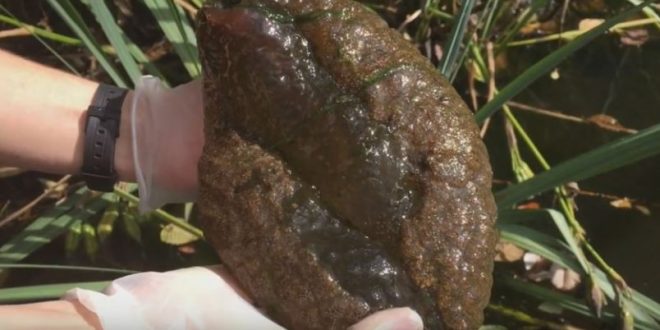Th species found in Stanley Park, known as a magnificent bryozoan or Pectinatella magnifica, normally only dwells east of the Mississippi river.
Researchers claim that warming global temperatures may have forced the bizarre organisms north of their normal habitat – but they can’t be sure.
Kathleen Stormont, from the Stanley Park Ecology Society, told the Vancouver Courier: “They’re a colony of tiny organisms that like to hang out together.
‘They have a very ancient lineage that hasn’t changed for hundreds of thousands of years.’
The tiny invertebrates, known as a zooid, are hermaphroditic and spread through clumps of cells on the organism known as statoblasts.
Each statoblast can reproduce asexually if it breaks off from a colony, allowing bryozoan clumps to spread in large numbers in the right conditions.
The zooids stick together for safety in numbers, Ms Stormont said, as a single organism on its own is easy prey.
Fossil records show that ancient bryozoans date back as far as 470 million years.
Bryozoans are often hard to spot because they stick to the bottom of ponds and lakes, where their brown-ish green colour camouflages with the murky water.
Agencies/Canadajournal
 Canada Journal – News of the World Articles and videos to bring you the biggest Canadian news stories from across the country every day
Canada Journal – News of the World Articles and videos to bring you the biggest Canadian news stories from across the country every day



